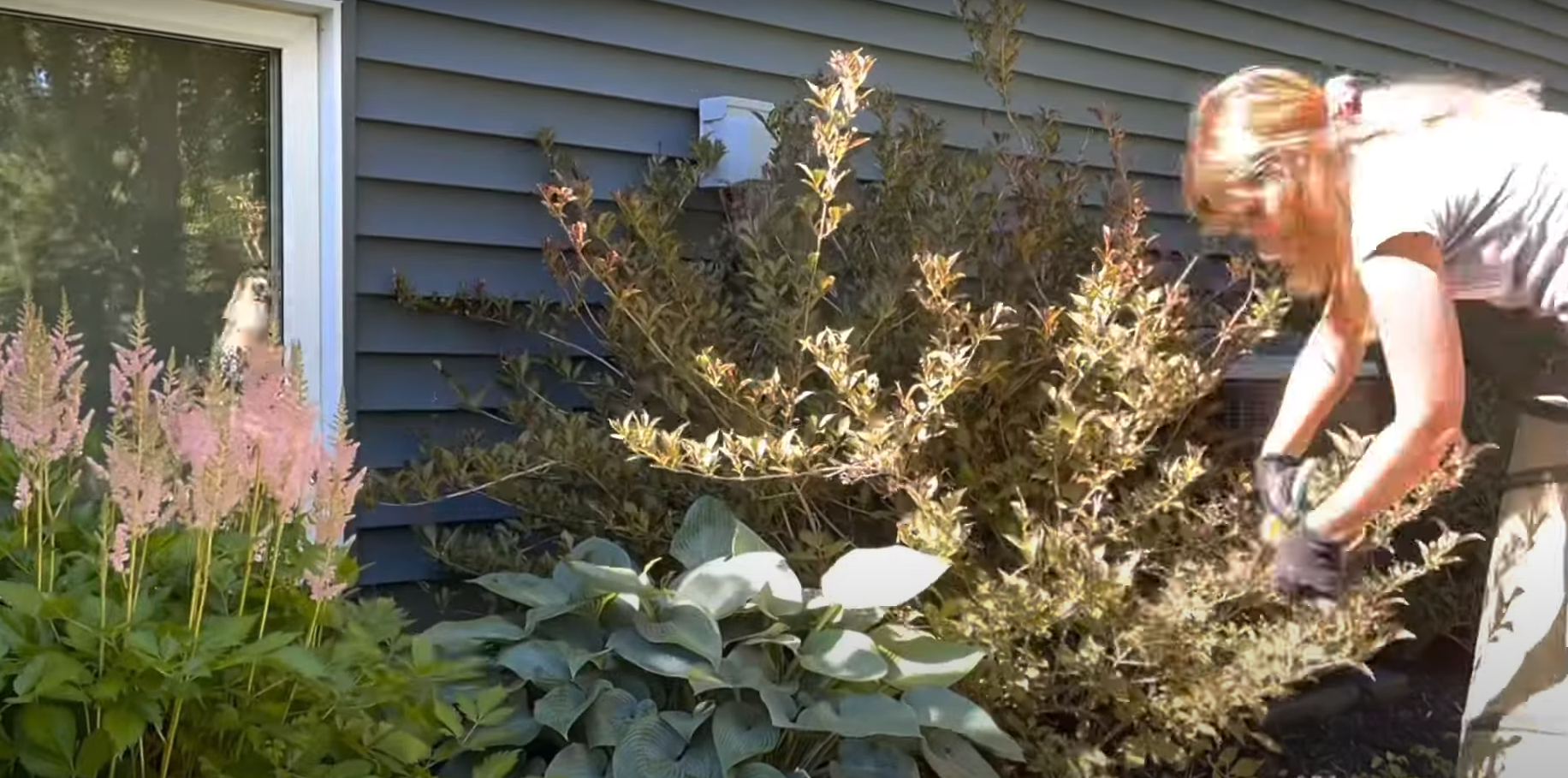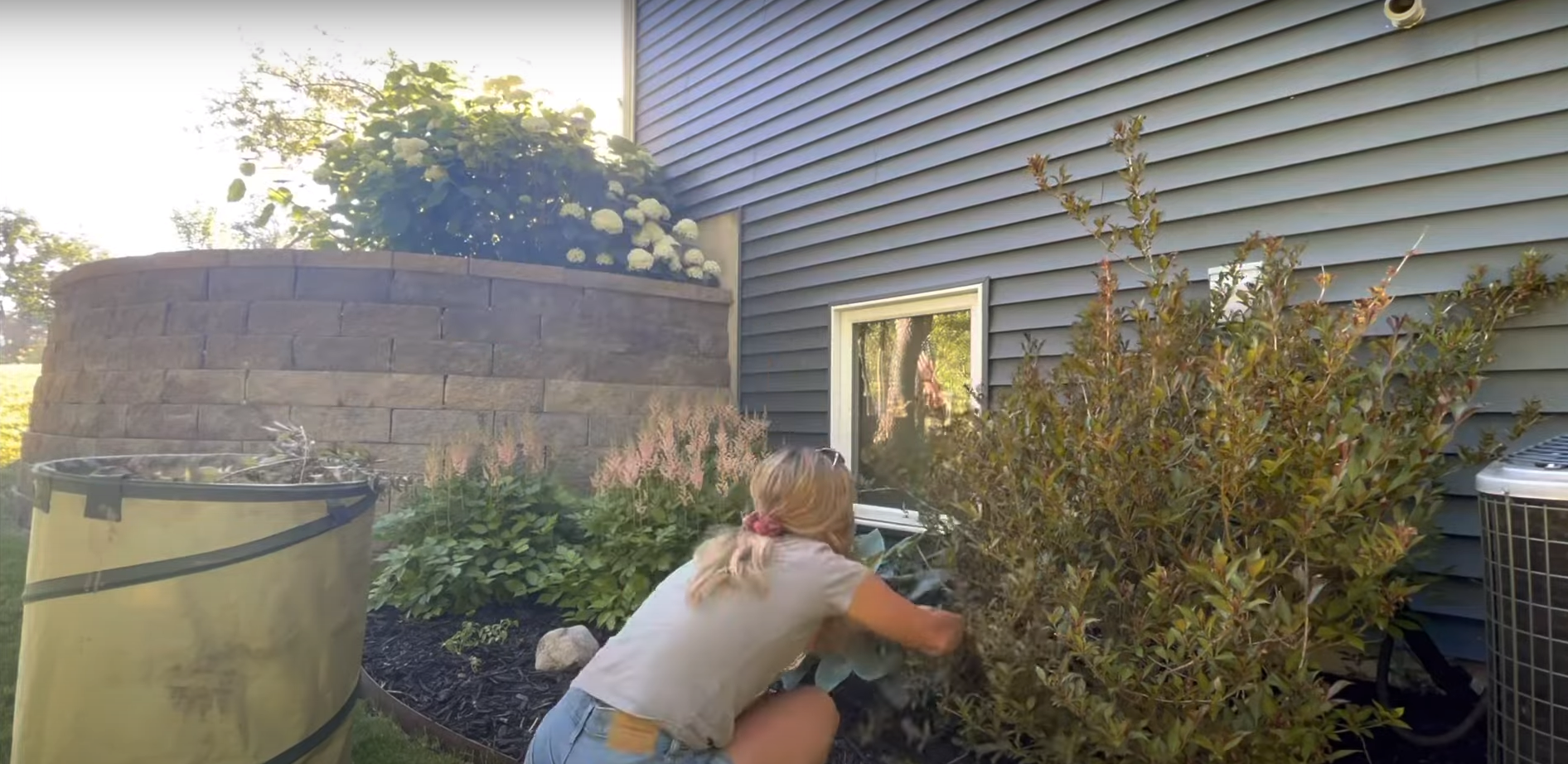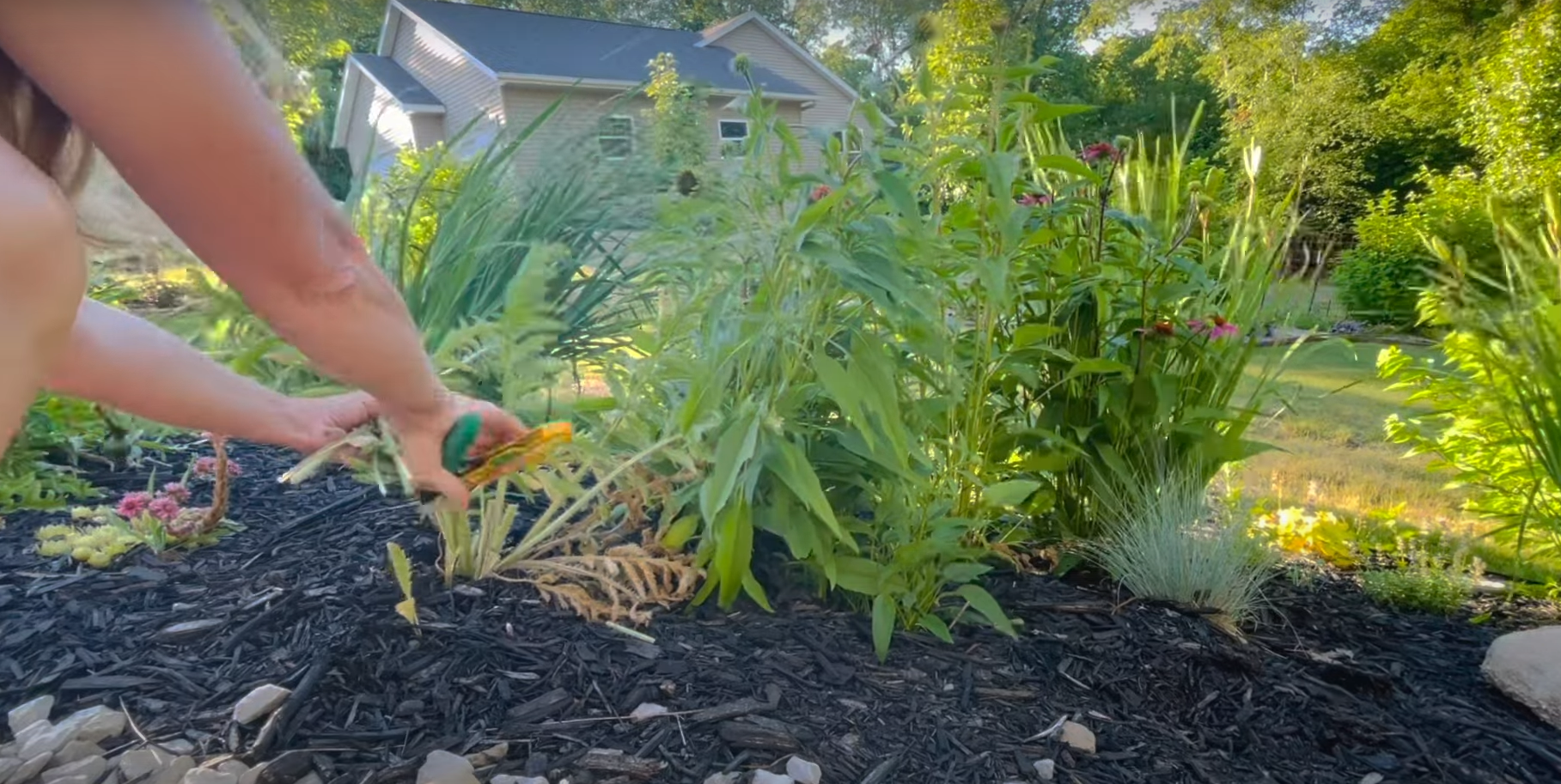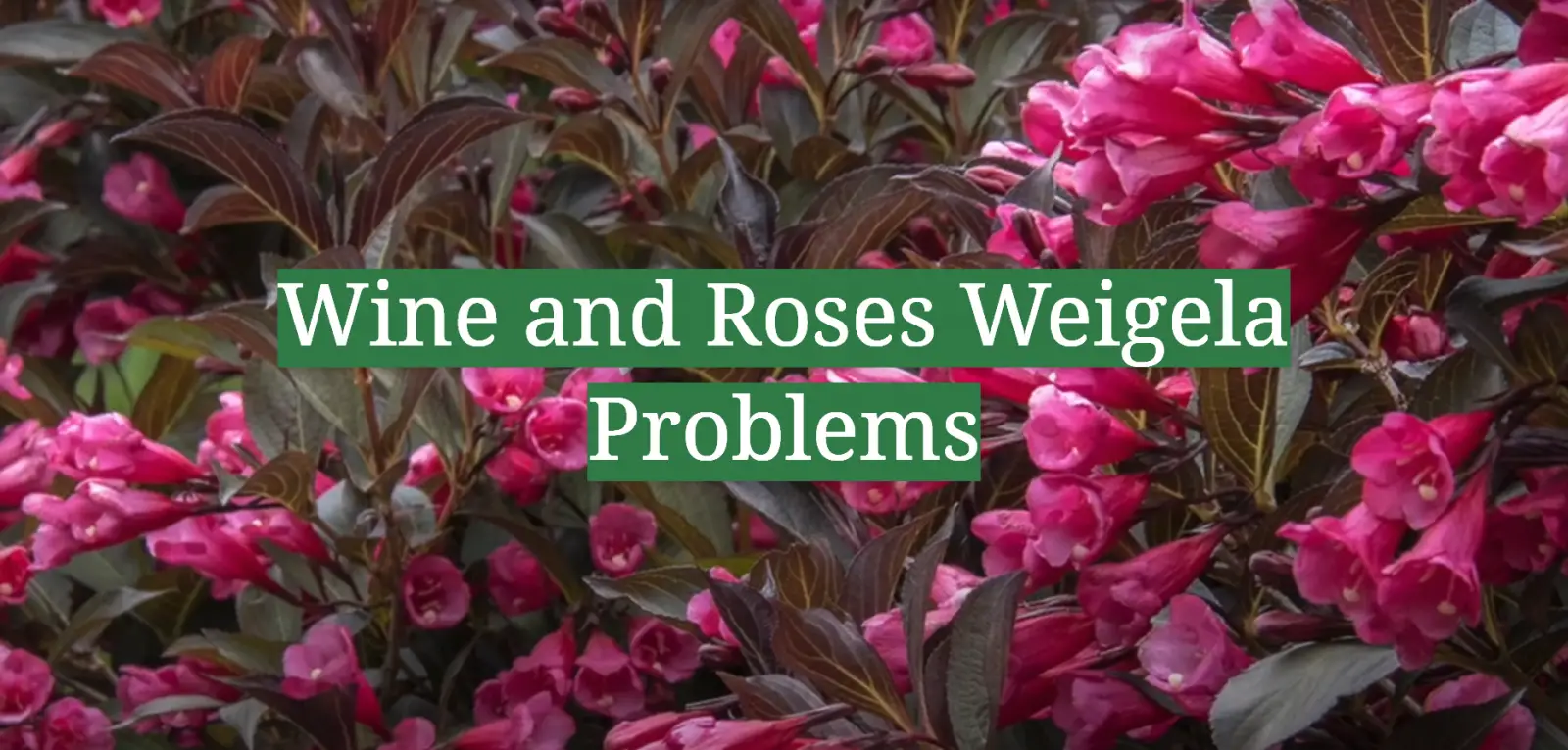Whether you’re a novice or an experienced gardener, the Wine and Roses Weigela can make for a beautiful addition to any garden. But before taking it on as a project, it’s important to understand the potential issues that may arise when caring for this particular species of shrub. From mildew problems to disease infestations, there are many things to watch out for with Weigelas – especially if you don’t have experience dealing with these types of plants. This blog post will provide tips on how to keep your Wine & Roses Weigela healthy, happy, and attractive during the season by addressing some common problems.
Wine and Roses Weigela Problems
Root Drowning
The Wine and Roses Weigela is susceptible to root drowning in overly wet soils, leading to root death. If the soil around the roots of this shrub becomes waterlogged, it can cause a decline in health and eventually lead to death. Make sure your plant’s soil has good drainage and avoid over-watering it to prevent this from happening. [1]
Insect attack
This plant is also susceptible to insect attack, so it’s important to keep an eye out for any signs of infestation. Aphids and whiteflies are two common pests that can damage the leaves of this shrub, while spider mites can cause discoloration on the foliage. If you spot any signs of insect activity, use a pest control product to treat the problem as soon as possible.

Sun scald
The Wine and Roses Weigela is not very tolerant of direct sunlight, which can lead to sun scald. To prevent this from happening, make sure that you plant your shrub in a spot where it gets only partial sun throughout the day. You should also keep an eye out for any signs of discoloration or wilting on the leaves, which could be a sign that your shrub is getting too much sunlight. If you notice these signs, move your plant to a shadier area.
Infection
This shrub is also vulnerable to fungal and bacterial infections, which can cause leaf spots or blights. If you notice any discoloration or wilting on the foliage, it’s important to treat the problem as soon as possible by applying a fungicide or bactericide. This will help keep your plant healthy and free from disease.
Slow growth
The Wine and Roses Weigela is a slow-growing plant, so it may take some time before you see noticeable growth. If your shrub isn’t growing at the rate you’d like, make sure that it’s getting enough sunlight and water. You should also give your plant a balanced fertilizer once or twice a year to encourage healthy growth. [2]
Overall, the Wine and Roses Weigela is an attractive shrub that can add color and interest to any landscape. However, it does require some special care in order to stay healthy. Keep an eye out for insect infestations, root drowning, sun scald, and fungal or bacterial infections in order to ensure that your shrub stays looking its best. With the right attention, your Wine and Roses Weigela can thrive for many years to come.

How to Fix?
If Wine and Roses Weigela is suffering from any of the problems mentioned above, it is important to act quickly. The most effective way to address these issues is with a combination of correct pruning, proper watering, fertilization, and pest control.
Pruning: Whenever possible, remove all dead or diseased branches from the Weigela shrub. Prune out any old stems that are not flowering anymore as well. This will help stimulate new growth and ensure maximum flowering potential. Be sure to make clean cuts just above another bud or shoot for best results. Avoid leaving large stumps behind when you prune.
Watering: Make sure your Wine and Roses Weigela gets enough water, but be careful not to overwater. Check the soil before you water and if it is still moist, then there is no need to apply more water. When you do water, make sure to saturate the entire root zone of the shrub. If possible, use a soaker hose or drip irrigation system for best results.
Pest Control: To keep pests from attacking your Wine and Roses Weigela, use an insecticidal soap or neem oil spray to keep them at bay. Make sure to check your shrub regularly for any signs of pests and treat accordingly.
If you follow these steps, you should be able to successfully address any problems that your Wine and Roses Weigela may have. With proper care, you can enjoy vibrant blooms from this beautiful shrub for many years to come! [3]
Can Weigela Grow In Pots?
The answer is yes, Wine and Roses Weigela can be grown in pots. In fact, it can be an excellent choice for a container garden since its relatively small size makes it easy to handle and move around. It’s important to keep in mind that when potted, the soil will dry out faster than if planted directly into the ground; thus you will need to water more frequently. Additionally, planting your weigela in a pot with plenty of drainage holes will help ensure your plant is not sitting in overly wet soil, as this can lead to root rot or other problems.
With proper care, Wine and Roses Weigela can be a beautiful addition to your container garden for many years to come!
How Fast Do Weigela Wine And Roses Grow?
Weigela Wine And Roses are fast-growing shrubs, often reaching heights of up to 10 feet with a spread of 8 feet in just two or three years. They can continue growing as much as 3 to 4 feet per year if conditions are favorable. With adequate water and sunlight, the flowers will be bigger and brighter too! Pruning once each spring is recommended to control the size and shape of your Weigela shrub. This will also help promote more blooms throughout the season. All in all, Wine & Roses Weigelas are an easy-to-care for plant that adds beauty and color to any landscape!

How Deep Are Weigela Roots?
Weigela roots can vary from shallow to deep depending on the type and condition of the soil. In general, Weigela roots will reach a depth of 18 to 24 inches in loose, well-draining soils, while they may penetrate up to 3 feet into heavier clay soils. Deeper rooted varieties of this shrub are available that can extend their roots even further.
Whether you are planning on planting or have already planted your Wine and Roses Weigela, it’s important to remember that deep root penetration is not necessary for successful growth. Instead, care should be taken to ensure proper irrigation and overall healthy plant care such as pruning and fertilizing. Additionally, ensuring that your soil does not become compacted or waterlogged around the shrub’s roots will help promote healthy growth and prevent common weigela problems. [4]
In conclusion, Wine and Roses Weigela roots vary from shallow to deep, depending on a variety of factors such as the condition and type of soil. Knowing how deeply these roots penetrate your soil can help you make informed decisions about where to plant your shrub and how best to care for it. With the right conditions, Wine and Roses Weigela can thrive in most garden settings, providing beautiful blooms year after year.
Are Weigela Roots Invasive?
No, Weigela roots are not typically considered to be invasive. They have a tendency to spread somewhat, but generally remain contained within the area they’re planted in. In fact, when grown as a hedge or border plant, their spreading root system can actually help keep your garden looking neat and organized.
Overall, Weigela roots are not typically considered to be invasive, but depending on the variety you choose and how well you maintain it, it can become a problem if left unchecked. Therefore, pruning—especially of suckers—is recommended in order to prevent your Weigela from overtaking other plants in your garden. With regular maintenance, you’ll be able to enjoy the beauty of this lovely shrub without worrying about its potentially unruly root system.
Can You Cut Weigela To The Ground?
Weigela, particularly the Wine and Roses Weigela variety, can be cut back to the ground in late winter or early spring. This practice is called rejuvenation pruning and should only be done when absolutely necessary. Rejuvenation pruning will remove dead wood as well as old growth that may have become overgrown or otherwise unruly. After cutting back to the ground you will need to water regularly during the first growing season while new shoots develop from the roots below. Prune again in following years to maintain size and shape of the shrub. [5]
Be sure not to prune too much; leaving some of the older growth can help protect new shoots from extreme weather conditions. With proper care, your Weigela should look vibrant and healthy for many years to come.
Next steps:
If you’ve decided to prune your Weigela shrub back to the ground, it’s important that you do so carefully. Make sure you are using sharp tools that are appropriate for the job and wear protective gloves to avoid injury during the process. Cut away all dead wood and overgrown branches so that the shrub is even all the way around. Be sure to water regularly during the first growing season to encourage healthy root growth. Lastly, remember to prune again in following years to keep your weigela looking its best!
Good luck with your pruning project! With a little bit of care, you can enjoy beautiful Wine and Roses Weigela for many years to come. [6]
FAQ
What is wrong with my weigela?
There are a variety of issues that can affect weigela health. Common problems include disease, insect infestation, poor soil conditions, and lack of proper pruning and fertilization.
How can I tell if my wine and roses weigela is sick?
Signs of an unhealthy wine and roses weigela may include discolored or wilting leaves, leaf spots or other signs of infection, branches with yellowed foliage or dead tips, as well as evidence of insects such as aphids or spider mites.
Why are my Weigela Wine and roses not growing?
Weigela Wine and Roses is a beautiful plant that can make any garden stand out. Unfortunately, they sometimes struggle to thrive in certain conditions. Common problems with Weigela Wine and Roses include pests, diseases, soil pH not being optimal for the plant, improper pruning, over-watering/under-watering, too much shade or too little sunlight, and even nutrient deficiencies.To ensure your Weigela Wine and Roses are healthy and abundant: check the soil pH level regularly; prune off any dead or diseased branches; water enough to keep the soil moist but not soggy; ensure there’s enough sun exposure (at least 6 hours per day); use insecticidal soaps or horticultural oils to deal with pests; and use fertilizer to supplement any nutrient deficiencies. With the right care, your Weigela Wine and Roses should thrive in your garden.
Why are the leaves on my weigela bush turning brown?
There are several possible causes for the leaves of a weigela bush to turn brown. Some of these include: too much sun, over-fertilization, inadequate water, or pest infestations. If the foliage on your Wine and Roses Weigela is turning brown, it’s important to identify and address the problem as soon as possible.
Too Much Sun –The Wine and Roses Weigela grows best in partial shade and can suffer from sunburn if exposed to excessive sunlight. To avoid this issue, make sure your shrub is planted in an area with some protection from direct sunlight. Additionally, keep an eye out for white spots on the leaves which may indicate sun damage and move the plant to a shadier spot if necessary.
Over-Fertilization – Applying fertilizer too frequently or in excessive amounts can also cause the leaves of your weigela bush to turn brown. Try adjusting the frequency and amount you are fertilizing your shrub with, and make sure it is receiving enough water as well.
Pest Infestation – Another possible cause of leaf discoloration on Wine and Roses Weigela could be pests such as aphids or mites, which feed on the sap inside the foliage causing discoloration and damage. If this is the case, treat your plant with an appropriate insecticide and keep an eye out for further signs of infestation.
Inadequate Water– Lastly, insufficient watering can result in browning of the foliage. Make sure your weigela shrub is receiving enough water and consider installing a drip irrigation system if necessary. By identifying the cause and taking appropriate action, you can help ensure that your Wine and Roses Weigela stays healthy and vibrant.
Useful Video: Pruning Wine and Roses Weigela, Siberian Iris and Poppies!
Conclusion
Wine and Roses Weigela is a popular ornamental shrub that can add beauty and color to any garden. However, it is susceptible to certain diseases and pests that may cause it to suffer from poor health or even die. To ensure the longevity of your Wine and Roses Weigela, be sure to provide adequate light, water, soil nutrients, and pest control measures. Regular pruning also helps keep the plant in good shape. If you are experiencing problems with your Wine and Roses Weigela, seek professional help immediately from a qualified arborist or horticultural specialist. With proper care and attention, this beautiful shrub can thrive for many years in your garden.
References:
- https://gardenaider.com/wine-and-roses-weigela-problems/
- https://www.gardeningknowhow.com/ornamental/shrubs/weigela/weigela-problems.htm
- https://yardenly.com/garden/wine-and-roses-weigela-problems/
- https://www.slowine.com/save-your-dying-wine-and-roses-weigela-identifying-the-signs-of-distress-and-what-to-do/
- https://gardenguider.com/wine-and-roses-weigela-problems/
- https://homeguides.sfgate.com/weigela-problems-65601.html












Leave a Reply
View Comments